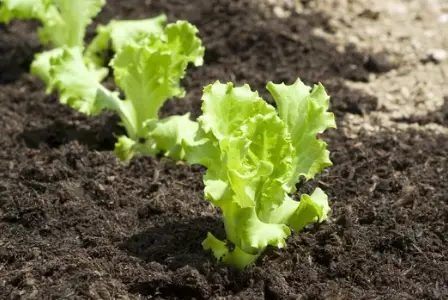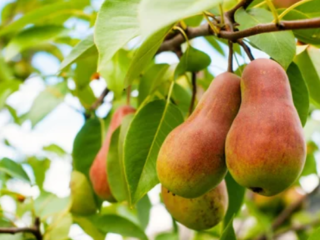Here are some of the Fast growing vegetable seeds which are a great option for those looking to harvest fresh produce quickly.
Some examples of fast growing vegetables include radishes, lettuce, and spinach.
These vegetables can be planted from seeds directly in the ground or in pots and containers.
Nevertheless, It is important to choose a location with plenty of sunlight and to prepare the soil by removing weeds and adding compost or fertilizers.
Water regularly and thin out seedlings to allow for proper growth.
With proper care, these fast growing vegetables can be harvested in as little as a few weeks.
Other fast growing options include beans, beets, and peas. Experiment with different varieties to find what works best in your garden.
Radishes

Radishes are a type of fast-growing root vegetable that is easy to grow and can be harvested in as little as 3-4 weeks after planting.
They prefer cool weather and well-draining soil and can be grown in a variety of soil types. Radishes can be sown directly in the ground or started in pots and transplanted later.
It is important to keep the soil moist, but not waterlogged, and to thin out seedlings to allow for proper growth.
Radishes come in a variety of shapes, sizes, and colors, including round, oval, and long, and can be white, red, purple, or black.
They can be grown in rows or clusters and are often used as a garnish or added to salads. Radishes are also a good source of vitamin C and are low in calories.
To plant radishes, simply scatter the seeds over a prepared bed of soil and lightly cover them with soil. Water the seeds and keep the soil moist until they germinate.
Once the seedlings are large enough to handle, thin them out to allow for proper growth.
Harvest the radishes when they are the desired size, typically around 1-2 inches in diameter. Enjoy them fresh or store them in the refrigerator for later use.
Lettuce

Lettuce is a fast-growing leafy green vegetable that is easy to grow and can be harvested in as little as 4-6 weeks after planting.
It prefers cool weather and moist, well-draining soil and can be grown in a variety of soil types.
Lettuce can be sown directly in the ground or started in pots and transplanted later.
It is important to keep the soil moist and to thin out seedlings to allow for proper growth.
There are many different varieties of lettuce, including loose leaf, butterhead, and romaine, and they come in a range of colors, including green, red, and bronze.
Lettuce is a good source of vitamins A and K and is low in calories. It is often used in salads, sandwiches, and as a garnish.
To plant lettuce, simply scatter the seeds over a prepared bed of soil and lightly cover them with soil.
Water the seeds and keep the soil moist until they germinate.
Once the seedlings are large enough to handle, thin them out to allow for proper growth. Harvest the lettuce when it is the desired size, typically around 6-8 inches tall.
Enjoy it fresh or store it in the refrigerator for later use.
Spinach

Spinach is a fast-growing leafy green vegetable that is easy to grow and can be harvested in as little as 4-6 weeks after planting.
This vegetable prefers cool weather and moist, well-draining soil and can be grown in a variety of soil types.
Spinach can be sown directly in the ground or started in pots and transplanted later. It is important to keep the soil moist and to thin out seedlings to allow for proper growth.
There are two main types of spinach: Savoy, which has crinkly leaves, and Flat-leaf, which has smooth leaves.
Spinach is a good source of vitamins A and K and is low in calories. It is often used in salads, sandwiches, and as a cooked green.
To plant spinach, simply scatter the seeds over a prepared bed of soil and lightly cover them with soil.
Water the seeds and keep the soil moist until they germinate. Once the seedlings are large enough to handle, thin them out to allow for proper growth.
Harvest the spinach when it is the desired size, typically around 6-8 inches tall. Enjoy it fresh or store it in the refrigerator for later use.
Bush bean

Bush beans are a type of fast-growing legume that can be harvested in around 6-8 weeks after planting.
They prefer warm weather and well-draining soil and can be grown in a variety of soil types.
Bush beans can be sown directly in the ground or started in pots and transplanted later.
It is important to keep the soil moist and to provide adequate sunlight for the best growth.
There are many different varieties of bush beans, including green beans, purple beans, and yellow beans, and they come in a range of sizes and shapes. Bush beans are a good source of protein, fiber, and vitamins and are low in calories.
They are often used in salads, side dishes, and as a protein-rich addition to meals.
To plant bush beans, simply scatter the seeds over a prepared bed of soil and lightly cover them with soil.
Water the seeds and keep the soil moist until they germinate.
Once the seedlings are large enough to handle, thin them out to allow for proper growth.
Harvest the beans when they are the desired size, typically around 4-6 inches long. Enjoy them fresh or store them in the refrigerator for later use.
Beets

Beets are a type of fast-growing root vegetable that can be harvested in around 6-8 weeks after planting.
They prefer cool weather and well-draining soil and can be grown in a variety of soil types.
Beets can be sown directly in the ground or started in pots and transplanted later.
It is important to keep the soil moist and to provide adequate sunlight for the best growth.
There are many different varieties of beets, including red beets, yellow beets, and striped beets, and they come in a range of sizes and shapes.
Beets are a good source of vitamins, minerals, and fiber and are low in calories. They are often used in salads, roasted, or pickled.
To plant beets, simply scatter the seeds over a prepared bed of soil and lightly cover them with soil.
Water the seeds and keep the soil moist until they germinate.
Once the seedlings are large enough to handle, thin them out to allow for proper growth. Harvest the beets when they are the desired size, typically around 2-3 inches in diameter.
Enjoy them fresh or store them in the refrigerator for later use.
Final Thoughts
To ensure the best results, it is important to follow all specific planting and care instructions for each type of vegetable.
Radishes, for example, prefer cool weather and well-draining soil.
They can be harvested in as little as 3-4 weeks after planting. Lettuce and spinach also prefer cool weather and should be grown in moist, well-draining soil.
They can be harvested in as little as 4-6 weeks after planting. Beans, beets, and peas also grow quickly and can be harvested in around 6-8 weeks after planting.
Regular watering is important to provide adequate sunlight and nutrients for the fastest growth.
Using a fertilization schedule and incorporating compost or organic matter into the soil can help ensure that the plants have all the necessary nutrients.
Proper spacing between plants and thinning out seedlings can also help with proper growth and development.
With a little planning and care, fast growing vegetable seeds can provide a quick and rewarding harvest in any home garden.




